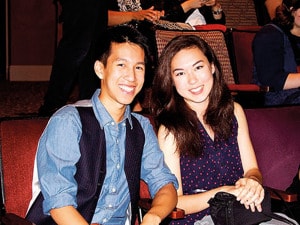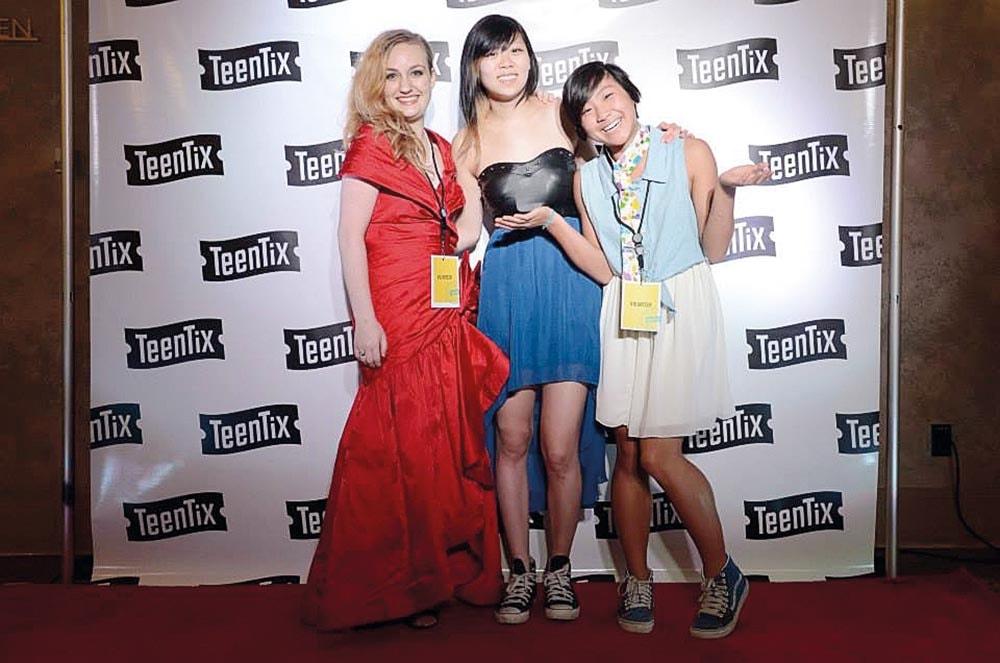Over the last decade, TeenTix has facilitated some $225,000 in ticket sales to teens and generated an estimated $1,627,650 for the local economy. Arsenault attributes this success to a number of factors. For starters, a centralized office on Seattle Center’s campus helped garner initial momentum. “With a centralized office, our partners don’t have to come up with their own plans to reach out to young constituents. Everyone agrees to a collective effort. Even though we have 53 partners, with 53 different box-offices procedures, they all participate with TeenTix in the same way,” Arsenault says.
One could argue that the risk for teenagers is also relatively low—they aren’t being spoon-fed special teenage programming. “Our partners make every show available to teenagers. That’s a big part of why we’re successful. This gets into treating young patrons as full-on patrons.” ACT’s Scandiuzzi agrees, “The idea that teenagers are too young for certain shows is bunk, because they show up.”
Embedded in the TeenTix model is the practice of empowering youth. “We put the tools into their hands to make decisions on their own. It’s easier to put 600 kids on a bus and take them to a show. It’s harder to do this one at a time,” says Arsenault.
TeenTix also oversees ancillary programs for interested teens. These include the TeenTix Press Corps, an arts criticism training group that blogs about shows (some 400 reviews have been published in the past decade); and the New Guard: Teen Arts Leadership Society, which engages young people in leadership training. The TeenTix Press Corps also conducts the TEENy awards, which go to partnering organizations for various best-of-season citations.

Despite the program’s success, Arsenault admits there’s a lot more work to be done in the coming years. “We’ve answered the question: Do teens care? Can they part from their cell phones? Will they show up? The answer is yes, unequivocally: They show up in large numbers. The next thing we need to do is answer the question: What do they need, and how do we better serve them?”
In order to begin to answer that question, Arsenault and her lean team (it’s just her, a part-time employee and volunteers) plan on implementing bar codes onto the TeenTix passes. “Currently the passes aren’t bar-coded or tracked. We might get information that 10 teen tickets were bought at a venue, but we don’t know if that was 10 different teenagers or the same kid going 10 times.” Scandiuzzi concurs: “The kids pay with cash. Often there’s not a credit card transaction. We try to get them to write down their e-mail addresses, but it’s hard.” This data would help partnering venues.
Arsenault points out that a lot of studies about young people only deal with those between 18 and 25. “If our data continues to perpetuate the myth that teens don’t attend the arts, then we’re setting ourselves up for a difficult task when we try to convince deciders in the industry that this is an important patron group that shows up.”
In addition to essential data-gathering, Arsenault says TeenTix aims to conduct more outreach in the coming years. “Right now anywhere between 160 and 200 teenagers sign up online every week on their own. That’s with almost zero outreach. We’re growing, but it’s within the same segment of teens. It’s friends and friends-of-friends. We need to get the word out to the adolescents who don’t know about us.”
Christine Bateman, who has worked at a number of TeenTix partner organizations, including ArtsEd Washington and Balagan Theatre, and is now the communications director at the Intiman, says that the challenge is similar for arts institutions. “We need to be more teen friendly, in the way that we ticket (with day-of-event sales), the way that we market (with viral buzz and social media), and the way that we encourage young audience engagement (through innovative programming both during and around events, like tweet seats and collaborations between TeenTix and On the Boards).”
“No one who has never been to the theatre wakes up at the age of 30 and decides to become a season subscriber—by then it’s too late,” Arsenault declares. “The time in your life when you’re developing taste is when you’re a teenager. When teens find something exciting to them, they don’t just look at it—they put their soul into it and make it part of their personality.” That’s a patron group worth cultivating.


